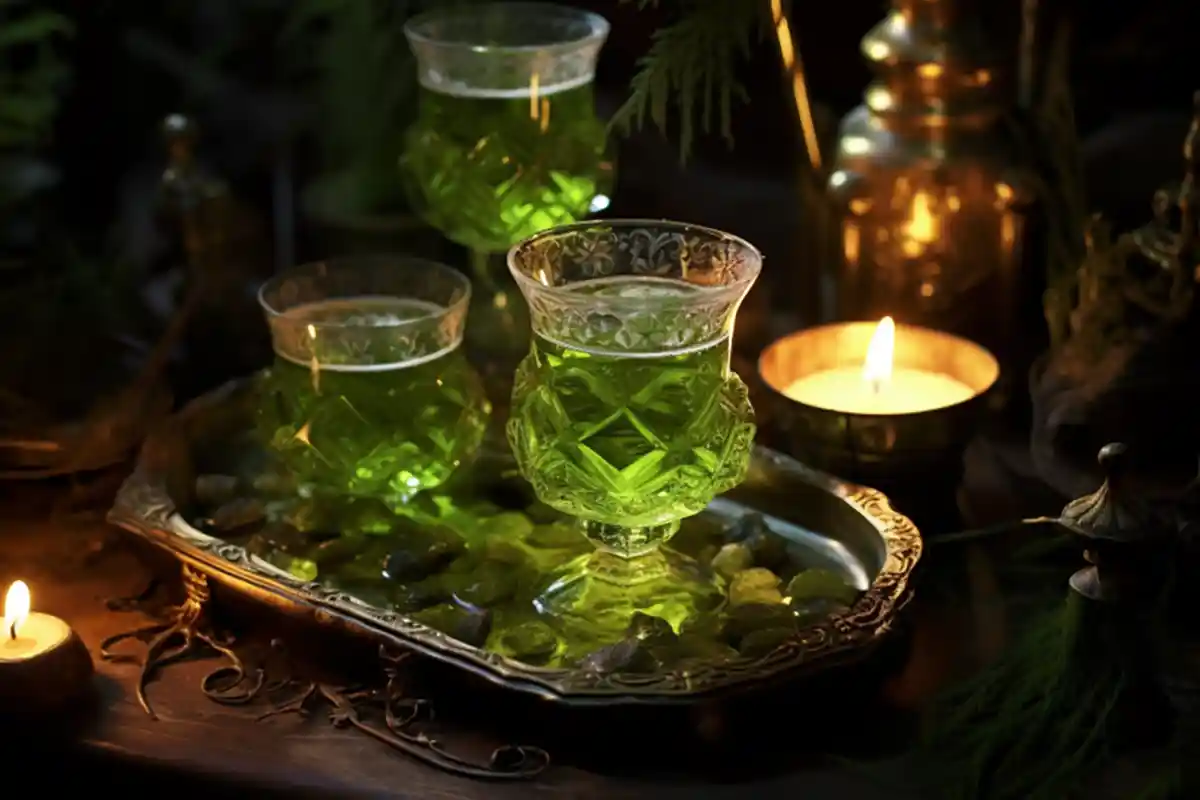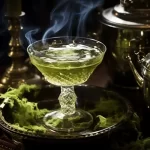In the realm of timeless indulgences and captivating mystique, few beverages can match the allure of absinthe. Known as the “Green Fairy,” this iconic drink has enchanted generations with its unique blend of artistry, history, and the intricate rituals that accompany its consumption. Step into the world of absinthe rituals, where time slows down, and the senses come alive in an ethereal dance of tradition and elegance.
Introduction: The Enigmatic Elixir
Absinthe, with its verdant hue and storied past, captivates all who dare to partake in its mysteries. Aromatic and complex, this anise-flavored spirit has been cherished by artists, writers, and connoisseurs for centuries. Its rich history and the allure of its rituals make absinthe an experience that transcends mere imbibing.
Unveiling the Origins: A Journey through History
The origins of absinthe can be traced back to the late 18th century in the picturesque Val-de-Travers region of Switzerland. A visionary distiller named Henri-Louis Pernod crafted the first commercial absinthe, setting the stage for an enduring tradition. From there, absinthe spread throughout Europe, captivating the hearts and palates of bohemians and intellectuals alike.
The Art of Preparation: Tools and Ingredients
To fully appreciate absinthe, one must understand the art of its preparation. The classic absinthe ritual requires specific tools—a glass, an absinthe spoon, sugar cubes, and ice-cold water. Additionally, the key ingredients—wormwood, anise, and fennel—contribute to the unique flavor profile and mesmerizing effect.
The Ritual Unveiled: Traditional Absinthe Preparation
The traditional absinthe ritual is a sensory experience like no other. Begin by placing the absinthe spoon across the rim of the glass, resting a sugar cube on it. Slowly, pour ice-cold water over the sugar, allowing it to dissolve and mingle with the spirit. As the water interacts with absinthe, an enchanting louche effect emerges—a mesmerizing transformation from emerald green to milky opalescence.
Slow Seduction: The Louche Effect
The louche effect is a hallmark of absinthe rituals. As the water drips into the glass, it releases the essential oils and botanicals, creating an opalescent cloud that dances within the emerald elixir. This enchanting transformation not only adds to the visual allure but also signifies the release of aromatic compounds, enhancing the overall sensory experience.
Sip by Sip: The Tasting Experience
With the absinthe properly prepared, it is time to indulge in its flavors. Take a moment to inhale the captivating aroma, allowing it to transport you to a bygone era. Then, take a small sip, savoring the intricate layers of botanicals, the soothing warmth, and the gentle lingering of anise. Each sip reveals new dimensions, inviting you to immerse yourself in the mystique of absinthe.
The Green Hour: Absinthe in Literature and Art
Absinthe has long been a muse for artists and writers, inspiring masterpieces that evoke the spirit’s enchanting qualities. From Edgar Allan Poe to Pablo Picasso, absinthe’s emerald allure has found its way onto canvases and into the pages of literary classics. The Green Hour, a term coined in the 19th century, refers to the time when absinthe was enjoyed as a cultural ritual, fostering creativity and conversation.
Debunking the Myths: Absinthe and the Bohemian Lifestyle
Over the years, absinthe has been shrouded in myths and misconceptions. Tales of hallucinations and madness surrounded the spirit, leading to its ban in many countries during the early 20th century. However, modern scientific research has dispelled these myths, revealing that the effects of absinthe are no different from any other alcoholic beverage when consumed responsibly.
A Global Resurgence: Absinthe in the Modern World
In recent decades, absinthe has experienced a remarkable resurgence. As the ban lifted in various countries, distillers revived old recipes and embraced innovative techniques. Today, absinthe aficionados can explore a vast array of traditional and contemporary offerings, each crafted with passion and a reverence for the drink’s historical significance.
Contemporary Absinthe Rituals: Exploring Innovations
While the traditional absinthe ritual remains cherished, contemporary mixologists and enthusiasts have expanded the boundaries of absinthe rituals. From experimental cocktails to modern variations of the louche effect, the world of absinthe continues to evolve, enticing both newcomers and seasoned absintheurs with delightful innovations.
Absinthe Food Pairings: Enhancing the Experience
Just as fine wines find their perfect companions in food, absinthe also lends itself to inspired pairings. The spirit’s complex herbal and anise flavors harmonize with an array of culinary delights, elevating both the drink and the dining experience. From delicate seafood to rich chocolates, the possibilities for absinthe food pairings are limited only by imagination.
The Absinthe Collection: A Connoisseur’s Guide
For those seeking to embark on a journey of exploration and refinement, building an absinthe collection offers an avenue to discover the nuances of different brands, distillations, and styles. From classic absinthes to limited editions and artisanal releases, a well-curated collection reflects the connoisseur’s dedication and passion for the green elixir.
Health and Absinthe: Separating Fact from Fiction
The topic of absinthe’s health benefits and risks has long been debated. While the wormwood herb in absinthe contains thujone, a compound with potential psychoactive properties, modern absinthes adhere to strict regulations to ensure safety. When consumed responsibly, absinthe can be enjoyed as a delightful indulgence, but moderation is always key.
The Cultural Impact: Absinthe in Society
Throughout history, absinthe has played a significant role in shaping society and culture. From the Parisian café culture of the 19th century to the modern-day renaissance of craft distilleries, absinthe continues to inspire gatherings, conversations, and artistic expression. Its cultural impact extends far beyond the drink itself, weaving its way into the fabric of our collective consciousness.
The Future of Absinthe: Innovation and Tradition Harmonized
As the journey through the world of absinthe unfolds, one cannot help but wonder about its future. With a delicate balance between honoring tradition and embracing innovation, absinthe will undoubtedly continue to captivate and enthrall generations to come. The Green Fairy’s allure, timeless rituals, and bewitching flavors will forever be cherished, ensuring that the legacy of absinthe lives on.
Conclusion
In a world where time seems to rush forward relentlessly, absinthe rituals offer a respite—an invitation to slow down, savor the moment, and embrace the artistry of tradition. Through its rich history, enigmatic allure, and evolving rituals, absinthe transcends the ordinary, captivating all who seek a taste of its poetic magic.
FAQs
- Is absinthe legal worldwide?
- Yes, absinthe is legal in most countries. However, the regulations regarding thujone content and production methods may vary.
- What is the louche effect in absinthe?
- The louche effect refers to the mesmerizing cloudiness that appears when water is added to absinthe, caused by the release of essential oils and botanicals.
- Can absinthe make you hallucinate?
- No, absinthe does not cause hallucinations. The myth surrounding absinthe’s hallucinogenic properties has been debunked by scientific research.
- What is the Green Hour?
- The Green Hour refers to the time of day, usually in the late afternoon or early evening, when absinthe was traditionally enjoyed as part of a cultural ritual.
- How should absinthe be stored?
- Absinthe should be stored in a cool, dark place, away from direct sunlight and extreme temperatures, to preserve its flavors and quality.



